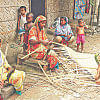SDGs: Three years on, where do we stand?

The leaders of 193 countries adopted the Sustainable Development Goals on September 25, 2015 following a long spell of extensive discussions and debates. Also known as the 2030 Agenda, the SDGs rest on three pillars—economic, social and environmental—so that development is sustainable, inclusive and holistic. At the heart of 17 goals and 169 targets of the SDGs is the principle of leaving no one behind, that is reaching out to each and everyone who is deprived.
The 5P's—people, prosperity, planet, partnership and peace—are the focus of the 2030 Agenda. Considering their breadth and depth, the SDGs have been termed as transformational, comprehensive, bold and ambitious. For example, as opposed to the earlier Millennium Development Goals that were implemented during 2000–2015, the SDGs call for eradication of poverty, abolition of hunger, elimination of all types of discrimination and establishment of equality everywhere.
At the time of the commitments made by the member states of the United Nations, there was skepticism. There were criticisms too. Was all this merely lip service and rhetoric? Moreover, the SDGs were not considered to be perfect and good enough to tackle the myriad problems the world is facing today.
Three years on, what has been the progress on the SDG front? In July 2018, 47 countries presented their voluntary national reviews to the High Level Political Forum. Such reporting indicates the enthusiasm among countries and attempts taken at the national level towards SDG implementation. This is somewhat of an indication of the momentum created at the country level, even though progress is not the same across countries. For example, poverty reduction measures are not adequate yet. And at the current rate of poverty reduction efforts, particularly in Sub-Sahara and South Asia, the world will not be able to end poverty in all its forms everywhere. Similar outcomes may be experienced in case of other goals as well.
The pace of progress can be accelerated by strengthening partnerships at the national and global levels. SDG 17 provides a range of means of implementation for achieving the targets. Achievement of the other SDGs is intrinsically attached to the achievement in SDG 17. At the national level, the government has to call upon the participation of all stakeholders including the private sector, non-government organisations, civil society, grassroots level organisations, various rights groups, and the media in the process of achieving the SDGs. Such a concept is new to many countries that do not believe in people's participation in the development process.
While some momentum is being observed at the country level, commitment to partnership at the international level is still inadequate. In addition to current challenges of rebouncing the global economy back from the economic meltdown a decade ago, protectionist policies and mounting geopolitical tensions are some emerging threats to human civilisation today. The massive agenda of SDG implementation requires finance, investment, trade, technology and capacity building. Developed countries are committed to provide 0.7 percent of their gross national income as overseas development assistance (ODA). However, only five countries—Denmark, Luxembourg, Norway, Sweden and the UK—could fulfil the UN benchmark in providing ODA in 2017. But the global average ODA disbursement was only 0.31 percent of GNI of the developed countries. The requirement for SDG implementation is enormous; it jumped from the initial billions of dollars per year to trillions. Annual investment requirement is USD 5-7 trillion for achieving the SDGs that include basic infrastructure, food security, climate change mitigation and adaptation, health, and education. According to United Nations Conference on Trade and Development, annual investment is currently only USD 1.4 trillion in developing countries.
The other support is through increased cross-border trade. With the moribund state of the World Trade Organization the prospect of receiving trade benefits such as duty-free quota-free market access for and technology transfer to the Least Developed Countries through the multilateral trading system has faded away. Except for the European Union and a handful of developed and developing countries, LDCs are not being able to enter the markets of developed countries at zero or low tariffs. Foreign direct investment is another way to help the LDCs and developing countries in fulfilling their targets of SDGs. In addition to creating opportunities for employment and income, FDI can also help transfer of technology. However, various regulatory limitations in both provider and receiving countries stand in the way. In 2017 FDI to LDCs declined by 11 percent compared to 2016.
So how are the SDGs going to be achieved by 2030? During 2000-2015, the world was able to significantly reduce poverty—much of which is of course due to the reduction of poverty in China itself. Some progress was also made in case of social indicators including gender parity in education and health. However, at present the weakest link of development is the inability of countries to reduce inequality. SDG 10 on eradication of inequality is the most difficult task at a time when the world is observing higher inequality than ever before. The distribution of wealth is concentrated among only a few fortunate people. Much of such resource accumulation through unfair means is being supported by the state itself. These clear cases of weak institutions and lack of governance are linked to SDG 16 that spells out the agenda for good governance, peace, justice, etc. Indeed achievement of all the other SDGs stands on fulfilment of the targets of SDG 16.
Therefore, if the business-as-usual approach continues, the hype about the SDGs will be gradually lost. Being non-binding in nature, the SDGs are in the hands of the goodwill of countries. One only hopes such goodwill turns into passion to make the world livable for everyone.
Dr Fahmida Khatun is the Executive Director of Centre for Policy Dialogue (CPD).










Comments